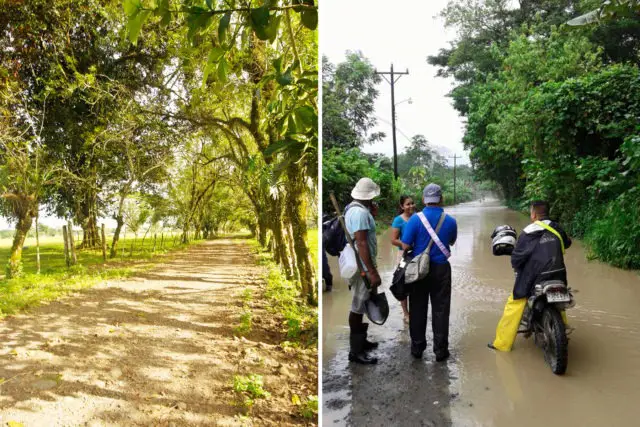Climate is a set of elements of atmospheric weather that define the heterogeneous thermic features that a territory presents. With regards to Costa Rica, the country is located in the Neotropic region of the Earth, so it has tropical characteristics, with two well-defined seasons throughout the year: the dry (also called summer) and the rainy (called winter).
Likewise, due to its tropical location, the temperature does not suffer drastic variations throughout the seasonal regime. However, at the end of the year, as it is located in the Northern Hemisphere, the nation is affected by seasonal changes, when temperatures tend to drop considerably due to north winds in the highest parts of the country. Also, the length of the day is affected during the solstices and equinoxes.
The rainy season occurs occasionally in certain regions of the country, while it is constant in humid areas such as the Caribbean.

On the other hand, from time to time, it presents some disparities, mostly as effects of the global alternations called El Niño and La Niña, as well as tropical fronts and the hurricane season, causing droughts in some regions (especially in the Pampa Guancasteca) and other pronounced increases in precipitation with subsequent floods or avalanches (almost always in the plains and coasts).
On the other hand, the winds vary considerably in intensity throughout the territory, while allowing the establishment of wind power plants (windmills), especially in the areas with the highest elevation.
The climate has been monitored, studied and registered for 130 years by the National Meteorological Institute (IMN), attached to the Ministry of the Environment, and due to its tropical location, our country has only two well-defined seasons in almost all the territory: the dry season and the rainy season.
Both have a duration of approximately six months and from the time it has disparities according to external meteorological phenomena that impact the Costa Rican territory.
The dry season is colloquially called summer, because it is the seasonal equivalent, in which there is a considerable reduction in rainfall and a gradual increase in temperature, similarly throughout the territory.
Even during this period, rainfall disappears in the driest regions, generating drought problems in the long term. This season has a regular duration of fewer than 6 months and occurs from the beginning of December to the end of April.
The hottest period occurs in March, which has less than 5 days of rain, with an average temperature of 22.8 °C and an absolute maximum temperature that even exceeds 34 °C, which is a variation of less than one degree concerning average annual temperatures. On the other hand, during April the highest precipitations are registered, with 79.9 mm of monthly rainwater and a quota of more than 5 days of rain per month.
A separate case occurs in December, which is a cold month, but which belongs to the dry season because it has a considerably reduced rainfall regime, with an absolute minimum temperature of 9 °C and at least 2 days of rain.
Finally, during the last days of June in some regions a particular phenomenon occurs called the “Veranillo de San Juan”, in which for a short time the climatic conditions return to being summer, the constant rainfall ceasing, and registering slight increases in the temperature.

